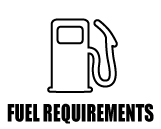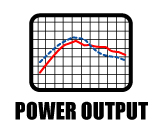Map Notes for 2005-2006 Legacy GT and 2005-2006 Outback XT
Supported Vehicles:
USDM 2005-2006 Legacy GT AT/MT
USDM 2006 Legacy GT SpecB MT
USDM 2005-2006 Outback XT AT/MT
Map Revision:
| Version | |
|---|---|
| Stage 1 | v400 |
| Stage1+ | v400 |
Map Availability:
- Download from the COBB Tuning Subaru WRX OTS Map Database.
Required Accessport Firmware:
- V3: 1.7.4.0-17431 or greater
Map | Peak Gains* |
|---|---|
Stage1 ACN 91 / Stage1 +SF ACN91 | +11% HP / +13% TQ over stock |
| Stage1 91 / Stage1 +SF 91 | +12% HP / +13% TQ over stock |
| Stage1 93 / Stage1 +SF 93 | +14% HP / +13% TQ over stock |
*Peak gains are measured as the difference between the highest points of the two plots.
*Largest gains are measured as the largest gain at any single point between the two plots.
Results may vary. Power as tested on an 2005-2006 LGT and 2005-2006 OXT vehicles using these identical calibrations. Generally speaking, the 91 and ACN91 calibrations run slightly lower boost, have a richer fuel curve, and a less aggressive ignition advance map to help compensate for 91 octane fuel; Arizona, California, and Nevada 91 octane fuel; and/or less than ideal atmospheric conditions. The maps designed for 93 octane are the most aggressive.
Stage 1
- Intake Requirements: Stock airbox and stock filter
- Exhaust Requirements: Stock exhaust
- Boost Targets:
- ACN91: ~15.0psi peak boost pressure tapering down to ~13.0psi by the 7000RPM redline, +/- 0.8 psi
- 91 Octane 95 RON Minimum: ~15.0psi peak boost pressure tapering down to ~13.0psi by the 7000RPM redline, +/- 0.8 psi
- 93 Octane 98 RON Minimum: ~15.0psi peak boost pressure tapering down to ~13.0psi by the 7000RPM redline, +/- 0.8 psi
Stage1+SF
- Intake Requirements: COBB SF intake system 724300
- Exhaust Requirements: Stock exhaust
- Boost Targets:
- ACN91: ~15.0psi peak boost pressure tapering down to ~13.0psi by the 7000RPM redline, +/- 0.8 psi
- 91 Octane 95 RON Minimum: ~15.0psi peak boost pressure tapering down to ~13.0psi by the 7000RPM redline, +/- 0.8 psi
- 93 Octane 98 RON Minimum: ~15.0psi peak boost pressure tapering down to ~13.0psi by the 7000RPM redline, +/- 0.8 psi
* The addition of any other hardware may make the vehicle perform poorly.
** No other intakes, turbochargers, or fuel injectors are certified as compatible with these maps. **
Non-Performance Maps
Anti-Theft Mode
- Will not allow vehicle to start
Economy Mode
- Fuel Requirements: 91 octane or better
- Intake Requirements: Stock airbox and stock filter
- Exhaust Requirements: Stock exhaus
- Boost Control Solenoid: Stock boost solenoid or COBB 3-port Boost Control Solenoid
- Boost Targets: Mechanical minimum (typically around 6psi - 12psi)
- Rev Limiter: 6700 RPM
* Not intended for aggressive driving *
Valet Mode
- Fuel Requirements: 91 octane or better
- Intake Requirements: Stock airbox or stock filter
- Exhaust Requirements: Stock exhaust
- Boost Control Solenoid: Stock boost solenoid or COBB 3-port Boost Control Solenoid
- Boost Targets: Mechanical minimum (typically around 6psi - 12psi)
- Rev Limiter: 3200 RPM
Monitoring Boost Levels:
The best way to determine if you are hitting target boost is to watch the TD Boost Error parameter. This parameter is your target boost (including altitude and temperature compensations) minus your actual boost (negative values mean you are over the target by the amount while positive values mean you are under). Ideally you want this value to be between 0 and 1.0 at wide open throttle (WOT), but -1.0 to 1.0 is acceptable assuming that you don’t have any significant knock corrections. Overboosting is more likely to occur in higher gears and with colder outside temperatures, so be sure to verify boost levels during these conditions.
High Altitude:
A quick note for those of you that live at higher altitudes. It is common for turbocharged cars at higher altitudes to run less boost pressure due to lower air pressure and air density. Your turbocharger has to work harder to compress a less dense air mass compared to the same turbocharger at sea level. This must be factored in when determining if your turbocharger is running the proper amount of boost pressure and not being pushed beyond its efficiency range.
Example: If you live in Denver at 5280 ft and are trying to run a peak boost pressure of 15 psi, your turbocharger has to work the equivalent of making ~17.5 psi at sea level.
There are barometric compensations within the factory ECU that lower boost targets as you climb in altitude in an effort to keep the turbocharger in its optimal range. The COBB performance maps utilize these compensations and therefore, it is perfectly normal for the final boost target to be lower than what is listed for your map.
Revision Notes:
| Version # | Notes: |
|---|---|
| v400 | Maps updated to eliminate unnecessary DTC Supression or updated versions for parity with other maps/vehicles within the platform |
| v350 | This map eliminates unnecessary DTC suppression. |
| v300 | Now compatible with Launch Control and Flat-Foot Shifting (LC/FFS) features (MT only). For complete details on how to enable and use the LC/FFS functionality, please visit this FAQ. These maps have been created with the newly-released AccessTUNER Pro 1.9.0.0. Maps created with this version of AccessTUNER software require the latest AccessPORT firmware (version 1.6.4.0-1189 or greater) be installed. All AccessPORTs must first be updated before using maps created with this latest AccessTUNER version. AccessPORT Manager 2.0 will automatically update the AccessPORT to the latest firmware version and is available for download on the COBB Tuning web page. |
| v118 | Adjustments made to individual cylinder ignition trim tables. |
| v116 | Primary Ignition and Dynamic Advance tables were modified to lessen low throttle stutter issue. This map has been updated to latest AccessTUNERTM file format, map file version v1.16 |
| v115 | Additional testing Legacy GT MT model with extensive testing on Outback XT MT model. Improvement and smoothing of the fuel curve, Primary Ignition table, and Dynamic Advance table. Revised boost tables to account for heat soak experienced on stock intercooler. Modified Primary Fuel table to account for the effects of AVCS tuning. Further tuned Dynamic Advance table to promote smooth transitional (low RPM to high RPM) acceleration. |
| v110 | Increased boost cut to 18.85 psi at sea level. Additional smoothing of Primary Fuel and Primary Ignition tables to improve drivability. |
| v104 | Revised boost tables to assist in more accurate boost targeting. |
| v102 | Fixed error with speed limiter. Moved Speed Limits A from 137, 138 mph to 547, 552 mph; Speed Limits B from 141 mph to 564 mph; Speed Limits C from 138 mph to 552 mph. |
| v101 | Revised Primary Fuel mapping to compensate for initial testing at altitude versus additional testing at sea level. |
| v100 | Original Mapping. Adjusted Fuel, Timing, Boost, AVCS, closed loop control, knock corrections, and base programming logic. Revised Closed Loop management (BASE MAP CHANGE). This was in large in response to little hiccups in the power band, particularly noticeable on 5EATs but something we could replicate with our 5MT. Revised Boost Control parameters (REALTIME or BASE MAP). Smoothed out boost related values, improved boost response at lower RPMs. Revised AVCS Mapping (REALTIME or BASE MAP). Altered intake cam timing parameters in an effort to improve low and mid-range torque and boost response. Revised Primary Ignition Advance (REALTIME or BASE MAP). Smoothed ignition advance mapping for low and mid RPM response. Modified high RPM timing and dynamic advance parameters to allow for improved ignition advance learning when using improved octane. Revised Primary Fuel tables (REALTIME or BASE MAP). Minor tweaks to improve turbo response. |
Copyright 2025 © COBB Tuning Products LLC. All Rights Reserved. | www.cobbtuning.com


